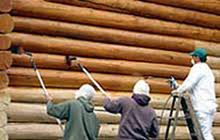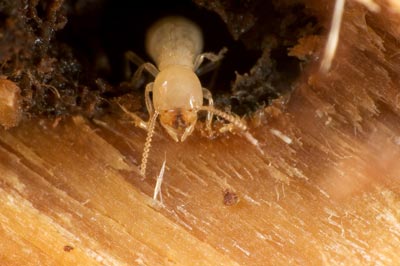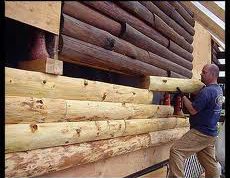 The wood species you select for your log home will make a difference both in upfront exterior preparation as well as ongoing maintenance. The Northern White Cedar that Katahdin uses in its log homes has unique properties that eliminate extra steps during initial exterior stain application, as well as ongoing maintenance and repair.
The wood species you select for your log home will make a difference both in upfront exterior preparation as well as ongoing maintenance. The Northern White Cedar that Katahdin uses in its log homes has unique properties that eliminate extra steps during initial exterior stain application, as well as ongoing maintenance and repair.
We spoke to two experts in the area of exterior stain, maintenance and repair to compare the requirements of both Pine and Northern White Cedar. Frank Gioffre has been teaching log home owners about stain, maintenance, and inspections for more than 25 years. Steve Howard, owner of Howard Construction in Berwick, Maine, is a Katahdin dealer and builder who has helped log home owners address some of the advanced maintenance and repair needs that can occur when rot or insects have damaged logs.
Species for Success
We talk about it a lot at Katahdin: the unique properties that Northern White Cedar offers as a building material. The cedar logs have naturally occurring resins that protect the logs from insects, mildew, rot, and excess checking. Because the cedar log is significantly drier than a pine log, any shrinkage, checking or cracking is relatively minimal and easily dealt with, when compared to moister pine species logs.
 At initial construction of a pine log home, the first maintenance preventative applied is borate treatment, since pine has no natural defenses from insects. According to Gioffre, the borate application is reasonably effective for pine, but it adds another step to exterior stain application. This can translate into a significant increase in stain labor costs of 30% percent.
At initial construction of a pine log home, the first maintenance preventative applied is borate treatment, since pine has no natural defenses from insects. According to Gioffre, the borate application is reasonably effective for pine, but it adds another step to exterior stain application. This can translate into a significant increase in stain labor costs of 30% percent.
“The contractor will have to set up staging or move ladders around the home three times for the two coats of stain and the final finish coat on any log home. Your crew will add a fourth circuit to apply the borate treatment to a pine log home,” Gioffre said. “The cost of the borate solution is a one-time cost and amounts to about forty cents per square foot of treated area.” He added that many log home companies treat the logs with borates before delivery, so that extra cost may not apply in every case. The logs are generally stained with two coats of stain and one additional protective coat. A good quality stain, such as Perma-Chink, will also prevent against mold. 
What many people don’t understand is the way that borates work to protect against wood ingesting insects. “The borate is ingested along with the wood pulp, where it kills the microorganism that allows the insect to digest the wood it has eaten,” Gioffre said. Borates are effective, but insects still will damage logs before they ingest enough borate to die. While the damage may not be readily visible to the eye, the small bore holes provide conduits for moisture, and ensuing rot, mold and mildew.
Steve Howard has worked on numerous log replacement jobs for pine log homes, but has never in thirty years replaced a cedar log in a home. Log replacement is a specialty job that can be quite costly to the pine log home owner. Once the damaged log is found, there is no choice but to replace it, as the condition only gets progressively worse. A replacement job may be costly if the damage extends to several rows of logs, or the home needs to be jacked up from the foundation.
In contrast, Northern White Cedar’s natural oils act as a repellent to insects, so that they have no desire to even start eating the wood. This cuts down on the steps and costs to protect against insects because cedar logs have their own natural defense system.
